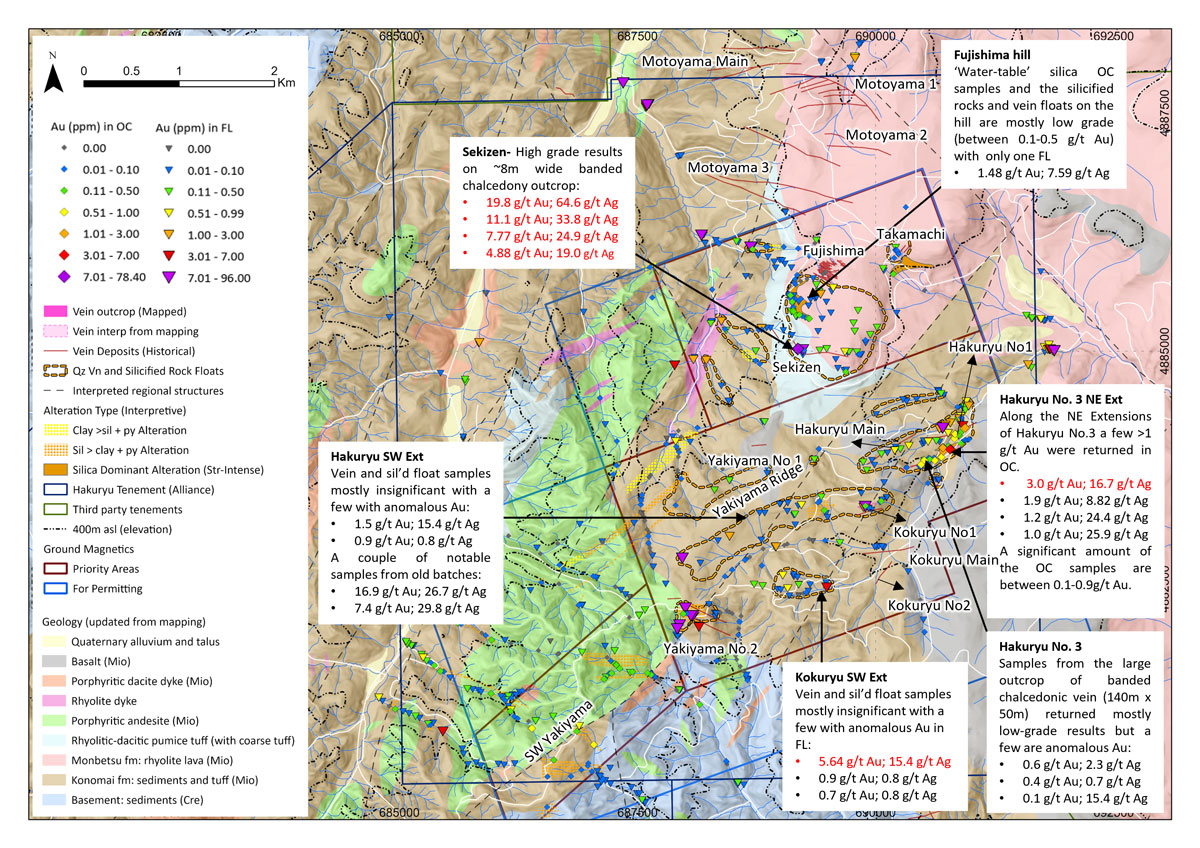The Hakuryu Project is located at the southern end of the 18km long Konomai epithermal gold district. Japan's third largest past producing gold mine, the Konomai Mine produced 2.35 million ounces of gold at an average grade of 6.4 g/t, between 1915 and 19731.
The southern portion of the Konomai vein system lies within the northeastern part of the Hakuryu Project including the Motoyama and Fujishima veins. A total of 990,000 ounces of gold were produced from the Motoyama main vein, which produced 240,000 ounces of gold at an average grade of 14.0 g/t and from the Motoyama No. 2 vein which produced 348,000 ounces at an average grade of 8.0 g/t2. The small Hakuryu lode, which lies in the southeastern portion of the project, produced about 8,000 tonnes of ore at 4.9 g/t Au and 43 g/t Ag.
References
1 Garwin, S.G. et al. 2005. Tectonic setting, Geology, and gold and copper mineralization in the Cenozoic magmatic arcs of Southeast Asia and the West Pacific. Economic Geology 100th Anniversary Vol. pp 891-930
2 Gold Mines of Japan, 1989. The Mining & Materials Processing Institute of Japan
Hakuryu No. 3
- The Hakuryu No. 3 vein features a main zone spanning 360 meters in length with a thickness of 20 meters and plunge to the SE.
- Surface sampling has returned values up to 3g/t Au.
- Interpreted to be a well preserved epithermal vein, high level at surface, potential for higher grade mineralisation at depth.
- Drilling planned to test this target.
Sekizen
- High grade rock chip values associated with a banded chalcedony outcrop – values up to 19.8g/t Au.
Fujishima Hill
- Well preserved epithermal target. Water table silica and chalcedony at surface.
- Anomalous Au at surface.
- High grade target at depth.
SW Yakiyama
- High level epithermal target – elevated Au-pathfinders, geochemical anomaly.



